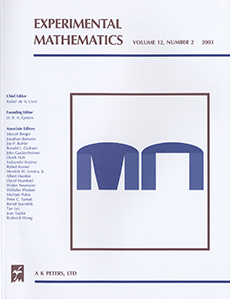Abstract
Normal and almost normal surfaces are essential tools for algorithmic 3-manifold topology, but to use them requires exponentially slow enumeration algorithms in a high-dimensional vector space. The quadrilateral coordinates of Tollefson alleviate this problem considerably for normal surfaces by reducing the dimension of this vector space from $7n$ to $3n$ (where $n$ is the complexity of the underlying triangulation). Here we develop an analogous theory for octagonal almost normal surfaces, using quadrilateral and octagon coordinates to reduce this dimension from $10n$ to $6n$. As an application, we show that quadrilateral– octagon coordinates can be used exclusively in the streamlined 3-sphere recognition algorithm of Jaco, Rubinstein, and Thompson, reducing experimental running times by factors of thousands. We also introduce joint coordinates, a system with only $3n$ dimensions for octagonal almost normal surfaces that has appealing geometric properties.
Citation
Benjamin A. Burton. "Quadrilateral–Octagon Coordinates for Almost Normal Surfaces." Experiment. Math. 19 (3) 285 - 315, 2010.
Information




